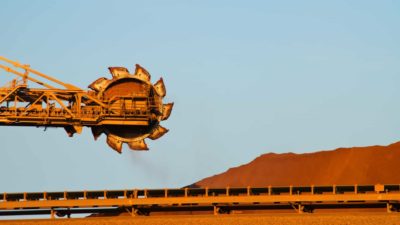Demand growth for copper is tipped to crash this year but ASX copper miners can still come out looking like heroes.
It sounds contradictory but the International Copper Study Group (ICSG) is tipping a bigger than expected deficit for the commodity that's heavily used in industrial production, even as it slashed its demand growth estimate.
The intergovernmental organisation representing copper producing and consuming countries cut its consumption growth to just 0.3% for 2019 compared to its May forecast of 2%, according to Reuters.
Demand for copper collapsing
The bearish forecast is driven by the slowing global economy with the US-China trade war knocking the wind out of industrial production, while the European Union (particularly export powerhouse Germany) struggles to regain momentum.
The ICSG believes that China's apparent consumption of copper (production and net trade) will hit its lowest level on record of 1% this year and it's likely to stay around the lows in 2020.
Copper demand from Europe is another bleak picture due to a weaker economic environment negatively affecting different end-use sectors combined with the dampening effect on cathode demand of good scrap availability, added ICSG.
Meanwhile, Japan will be sluggish while the increase in demand from the US in 2019 will flatten out next year.
Why the copper price can still rise
The weakening global outlook is weighing on the copper price, which is largely flat from the start of the year as Dr Copper (it's called that as it usually leads the metals market) is highly correlated to economic growth.
This would normally be bad news for our major copper producers like OZ Minerals (ASX: OZL), Sandfire Resources NL (ASX: SFR) and BHP Group Ltd (ASX: BHP), but Dr Copper could run ahead as supply of the commodity is anticipated to drop significantly.
The expected copper deficit for 2019 may be 70% worse than previously thought. The ICSG believes the shortfall will blow out to 320,000 tonnes this year, up from its earlier prediction of 190,000 tonnes.
What's more, the expected supply surplus for 2020 has been turned on its head. The organisation is forecasting a 250,000-tonne gap compared to a surplus of 281,000 tonnes.
Unexpected issues with mines in the African Copperbelt countries of Zambia and the Democratic Republic of Congo is a big contributing factor, while escalating social unrest in Chile (the world's largest copper producer) is also likely to keep Dr Copper on the front foot.
Further, I am expecting trade tensions between the US and China to ease a notch or two as both sides have lots to lose from the trade war. This in turn should improve demand sentiment for copper.
The only caveat here is the difficulty in forecasting the demand and supply of copper as there are many moving parts to the market.
You'll need more than a doctorate to make longer-term copper forecasts with any level of confidence.








